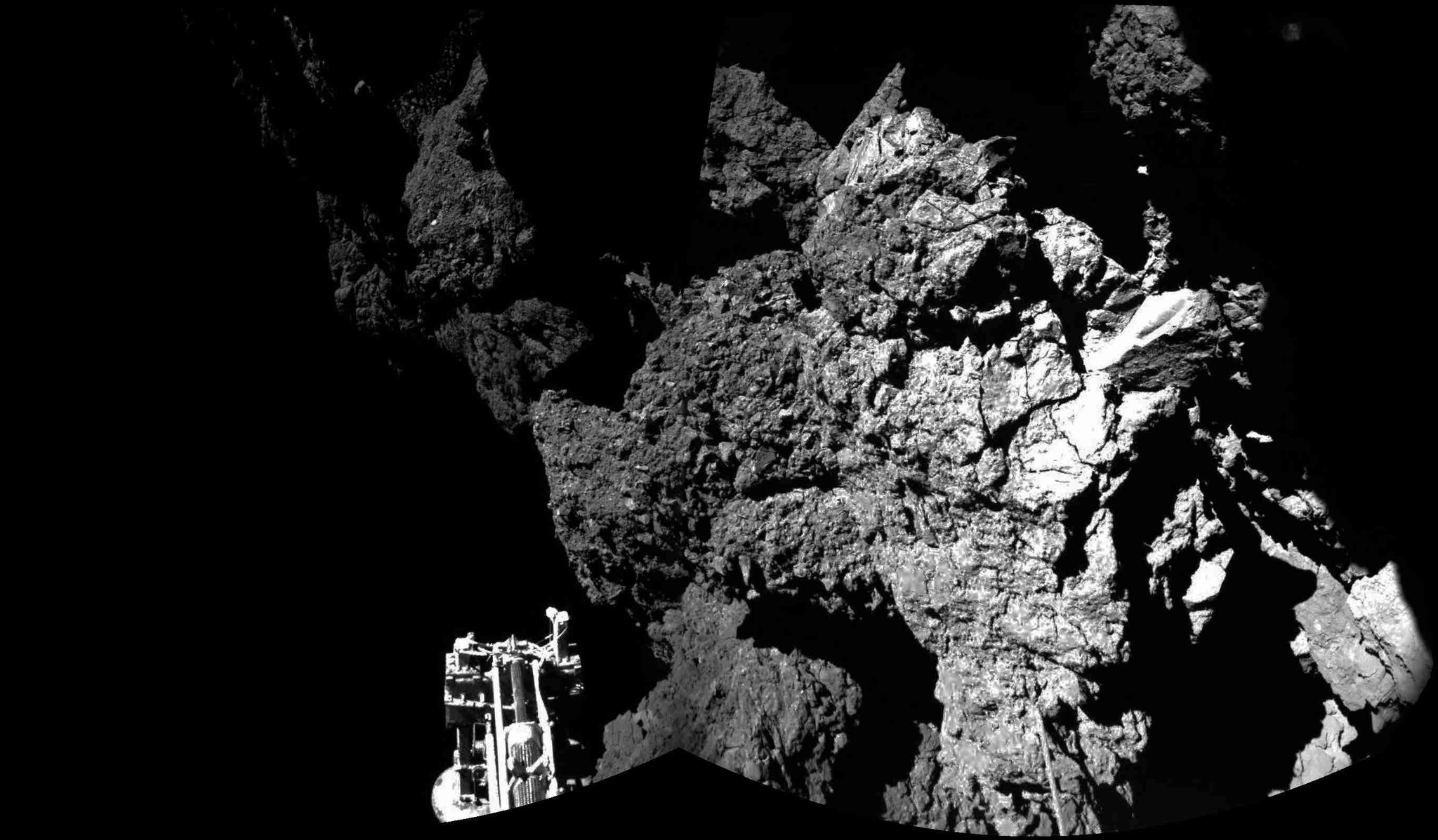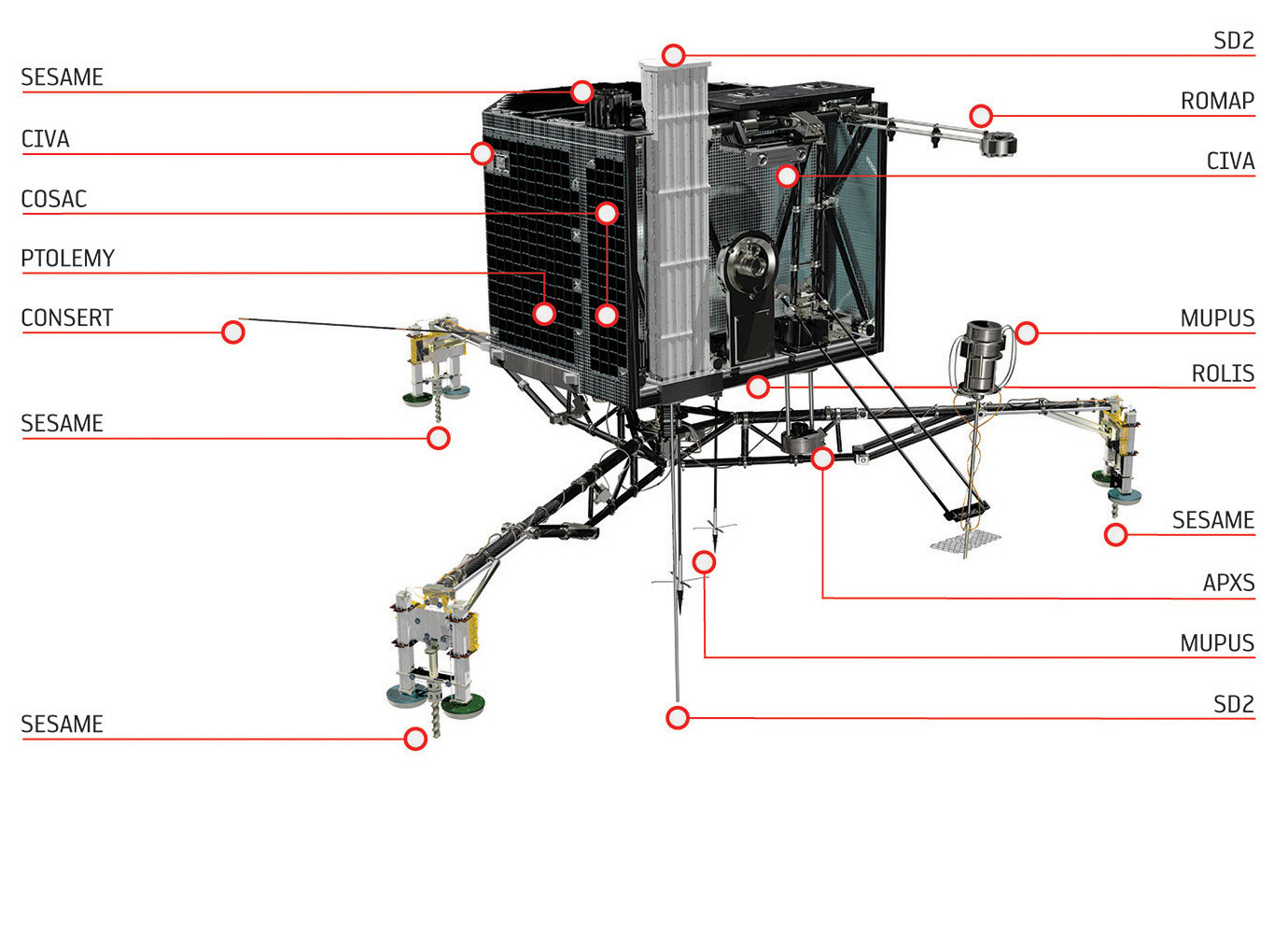The CONSERT instrument communicates with the almost identical instrument placed on the orbiter. The physical, thermal and mechanical properties of the soil are evaluated by the MUPUS instrument while SESAME studies the propagation of waves through the surface between the legs of the lander, and the properties of the dust raised during the impact. Finally ROMAP is a magnetometer for measuring the possible magnetic field of the comet.

Le départ de Philae vu de l’orbiteur
Crédit : ESA/Rosetta/MPS for OSIRIS Team MPS/UPD/LAM/IAA/SSO/INTA/UPM/DASP/IDAPhilae broke off from the orbiter without a problem on November 12, 2014, an important day. It arrived after a seven-hour travel on the ground of the nucleus close to the intended place, another great performance of celestial mechanics. But the device that was supposed to tackle it on the ground did not work, as well as the harpoons that were to hook it. So it rebounded, and traveled almost a kilometer, bouncing twice on the ground before it got stuck in a very unfavorable location. It nevertheless provided extremely interesting data during the lifetime of its batteries, about 60 hours. Then no more news until June 13, 2015, when a short contact could be established with the orbiter, the batteries being partially recharged by the solar panels despite a very sparse sunshine. Since then it has been mute.

Le site final de Philae, avec une image prise par sa propre caméra montrant un de ses trois pieds
Crédit : ESA/Rosetta/Philae/CIVA